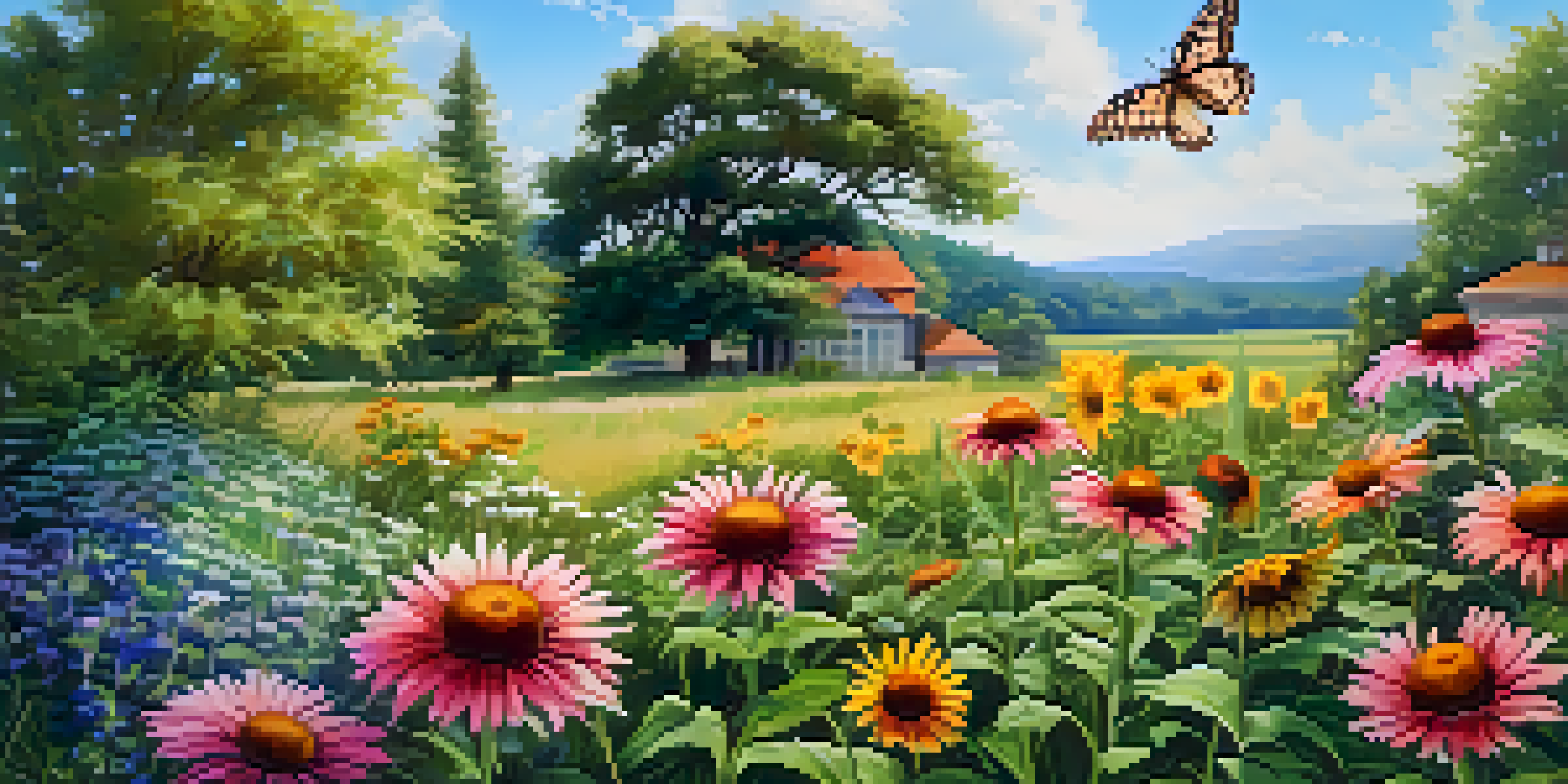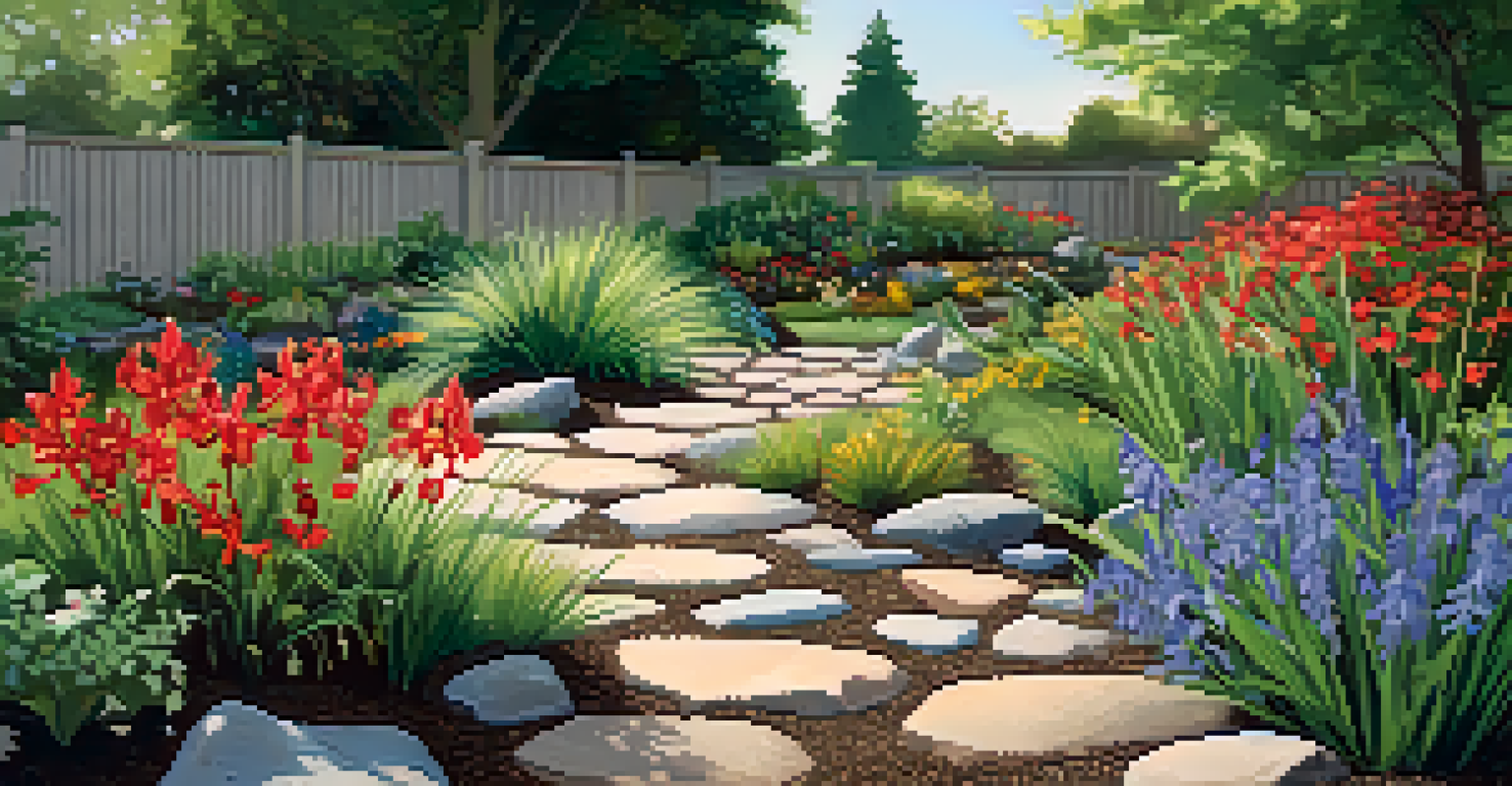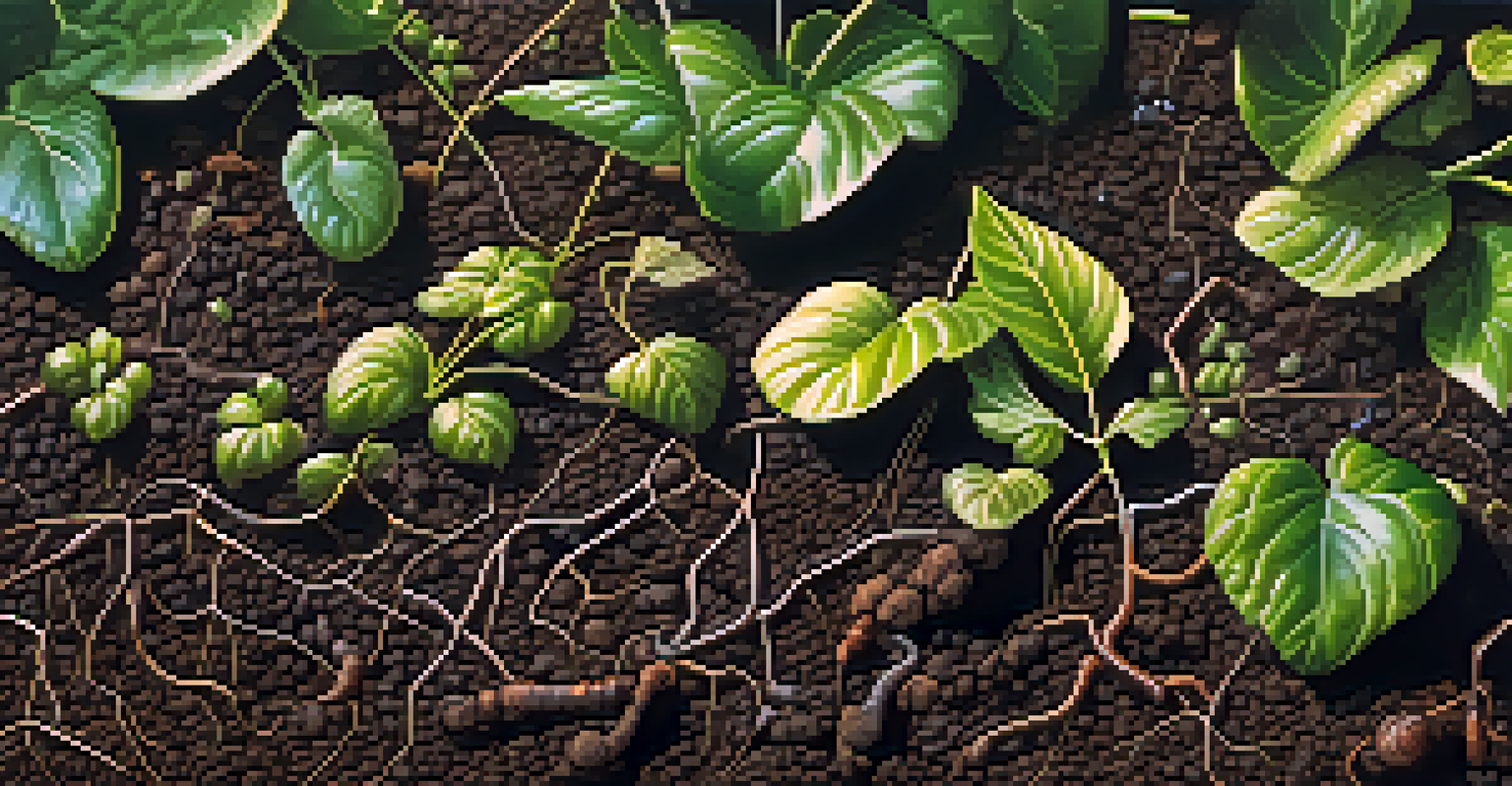Using Native Plants for Effective Water Conservation Strategies

Understanding Native Plants and Their Benefits
Native plants are species that naturally occur in a specific region, adapted to the local climate and soil. These plants have evolved over time to thrive without excessive watering or maintenance, making them ideal for water conservation. By choosing native species for landscaping, gardeners can reduce the need for irrigation, which is especially crucial in drought-prone areas.
The best time to plant a tree was twenty years ago. The second best time is now.
Moreover, native plants support local wildlife, providing food and habitat for birds, insects, and other creatures. This creates a balanced ecosystem that helps maintain biodiversity. For example, planting milkweed attracts monarch butterflies, while native grasses provide shelter for small mammals.
Using these plants not only conserves water but also fosters a healthier environment. When we focus on native plants, we're not just saving water; we're also promoting a sustainable landscape that benefits both people and nature.
How Native Plants Reduce Water Usage
One of the primary advantages of native plants is their ability to survive on less water. Their root systems are often deeper and more extensive than those of non-native species, allowing them to access moisture from deeper soil layers. This means once established, they require minimal irrigation, even during dry spells.

Additionally, native plants are adapted to local rainfall patterns, making them more resilient to drought. For instance, plants like sagebrush and yarrow can thrive in arid conditions, showcasing how nature has equipped them to deal with limited water resources. As a result, homeowners can enjoy lush landscapes while significantly cutting down on their water bills.
Native Plants Save Water
Native plants are adapted to local conditions, requiring less water and reducing irrigation needs.
Incorporating drought-tolerant native plants into gardens not only conserves water but also minimizes the environmental impact associated with excessive irrigation. By reducing water usage, we can contribute to a more sustainable future for our communities.
Creating a Native Plant Landscape
Designing a landscape with native plants can be both rewarding and aesthetically pleasing. Start by assessing your local environment, including soil type, sunlight, and water availability. This information will guide you in selecting the right native plants for your space, ensuring they thrive without much intervention.
Nature does not hurry, yet everything is accomplished.
Consider grouping plants with similar water and light needs together. For example, you might plant sunflowers alongside echinacea, which are both well-suited for sunny spots. This not only enhances the visual appeal but also optimizes their growth conditions, leading to a more successful garden.
By carefully planning your native plant landscape, you’ll create a vibrant, low-maintenance space that conserves water. Plus, it’s a wonderful opportunity to connect with nature and share the beauty of local flora with your community.
Soil Health and Water Conservation
Healthy soil is crucial for maintaining moisture and supporting plant growth, particularly in water conservation efforts. Native plants contribute to soil health by promoting a diverse ecosystem of microorganisms and organic matter. This interaction improves soil structure, enhances nutrient availability, and increases water retention.
When soil is rich and well-aerated, it allows for better infiltration of water, reducing runoff and promoting deeper moisture absorption by plant roots. Incorporating organic mulch around native plants can also help retain soil moisture, reducing the need for additional watering.
Soil Health Boosts Conservation
Healthy soil enriched by native plants improves water retention, supporting sustainable gardening.
By focusing on soil health, we can create a sustainable environment that supports both native plant growth and efficient water use. This holistic approach benefits not only the plants but also the surrounding ecosystem.
Native Plants and Rain Gardens
Rain gardens are a fantastic way to utilize native plants for water conservation while managing stormwater runoff. These shallow, planted depressions capture rainwater, allowing it to soak into the ground rather than flow into storm drains. When designed properly, rain gardens can help filter pollutants and recharge groundwater supplies.
Incorporating native plants into rain gardens enhances their effectiveness, as these species are adapted to handle periods of both standing water and dry conditions. Plants like blue flag iris and cardinal flower thrive in these environments, providing beauty while serving a functional purpose.
By creating a rain garden filled with native plants, homeowners can contribute to water conservation efforts while beautifying their property. This practice not only supports local ecosystems but also promotes responsible water management in urban settings.
The Role of Mulching in Water Conservation
Mulching is an effective strategy for conserving water in gardens, especially when combined with native plants. By applying a layer of organic mulch around plants, you can reduce evaporation, suppress weeds, and maintain soil temperature. This means plants require less frequent watering, allowing for better water management.
Native plants, when combined with mulch, create a robust system that thrives with minimal intervention. As the mulch breaks down, it enriches the soil, further enhancing its ability to retain moisture. This symbiotic relationship between mulch and native plants results in a healthy and sustainable landscape.
Community Drives Native Initiatives
Engaging the community in native plant efforts fosters sustainability and enhances local ecosystems.
Incorporating mulch into your gardening routine not only conserves water but also supports the overall health of your plants. It’s a simple yet effective way to promote a thriving ecosystem right in your backyard.
Community Engagement and Native Plant Initiatives
Engaging with the community around the benefits of native plants can amplify water conservation efforts. By organizing workshops, plant swaps, or community gardens, you can raise awareness and encourage others to adopt native landscaping practices. This collective action can lead to significant environmental benefits.
Collaborating with local organizations can also provide resources and support for larger native planting initiatives. Many communities have programs aimed at restoring natural habitats, which can enhance local biodiversity and improve water quality. This fosters a sense of community while working towards common environmental goals.

Promoting the use of native plants within your community cultivates a culture of sustainability. As more people adopt these practices, the cumulative effect can lead to healthier ecosystems and better water conservation across the region.